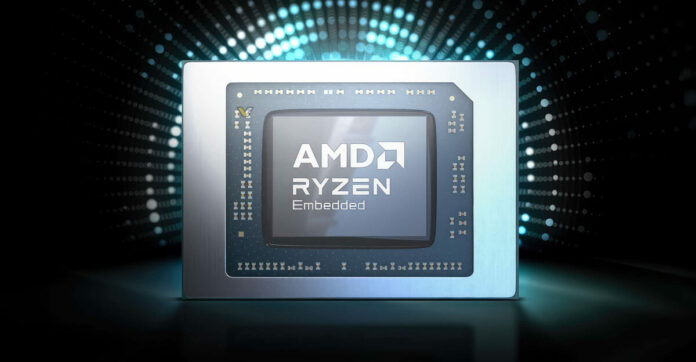AMD has launched the Ryzen Embedded 8000 Series and, you guessed it, the range bets big on AI. Sporting a neural processing unit (NPU) based on XDNA architecture, the accelerated processing unit (APU) primarily focuses on workloads and applications. Since the GPU side packs RDNA 3 and CPU relies on Zen 4, however, they could have some gaming gumption even if it’s not the intended purpose.
Partnering with embedded ODMs such as Adventech, ASRock, and iBASE, there are four chips in the series. From top to bottom, these include the eight-core, 16-thread AMD Ryzen Embedded 8845HS and 8840U, and six-core, 12-thread 8645HS and 8640U. Based on 4nm, TDP profiles range from 15W to 54W, which is unsurprisingly a slim power draw, given these are baked into motherboards. They’ll work alongside DDR5 memory up to 5,600MT/s.
Currently, we’ve explored just the tip of the AI iceberg. Its early days focus on machine vision, robotics, and industrial automation. Team Red naturally claims Ryzen Embedded 8000 helps in all three. In particular, AMD highlights the ability to plan routes in real-time, adapting to dynamic environments using machine learning. The chips will also enhance analysis without leaning on the cloud.
This time around, the “XDNA architecture and its powerful AI engines” are meant to augment the AI performance. This isn’t just the extra oomph you get from a new generation but the influence of the NPU. This new chip helps the CPU and GPU work in better harmony by increasing their ability to communicate. As a result, these processors allow for better computational efficiency in AI applications and frameworks like PyTorfch and TensorFlow.
The potential for AI in embedded chips isn’t just for applications. If a chip can learn, it can decide when to pump up the power for performance. Alternatively, it can also crank things down to become ultra-efficient, depending on what you need from it. There’s the potential it could give you frames or a better battery in portable devices. Anything that penny-pinches to save on my electric bill is welcome in my books.
Here’s hoping it’s not just empty promises. Intel Core Ultra made similar lofty claims but ended up more power-hungry than its predecessors inside an idle MSI Claw. Still, it’s the first generation of AI Ryzen, so the only way is up.

